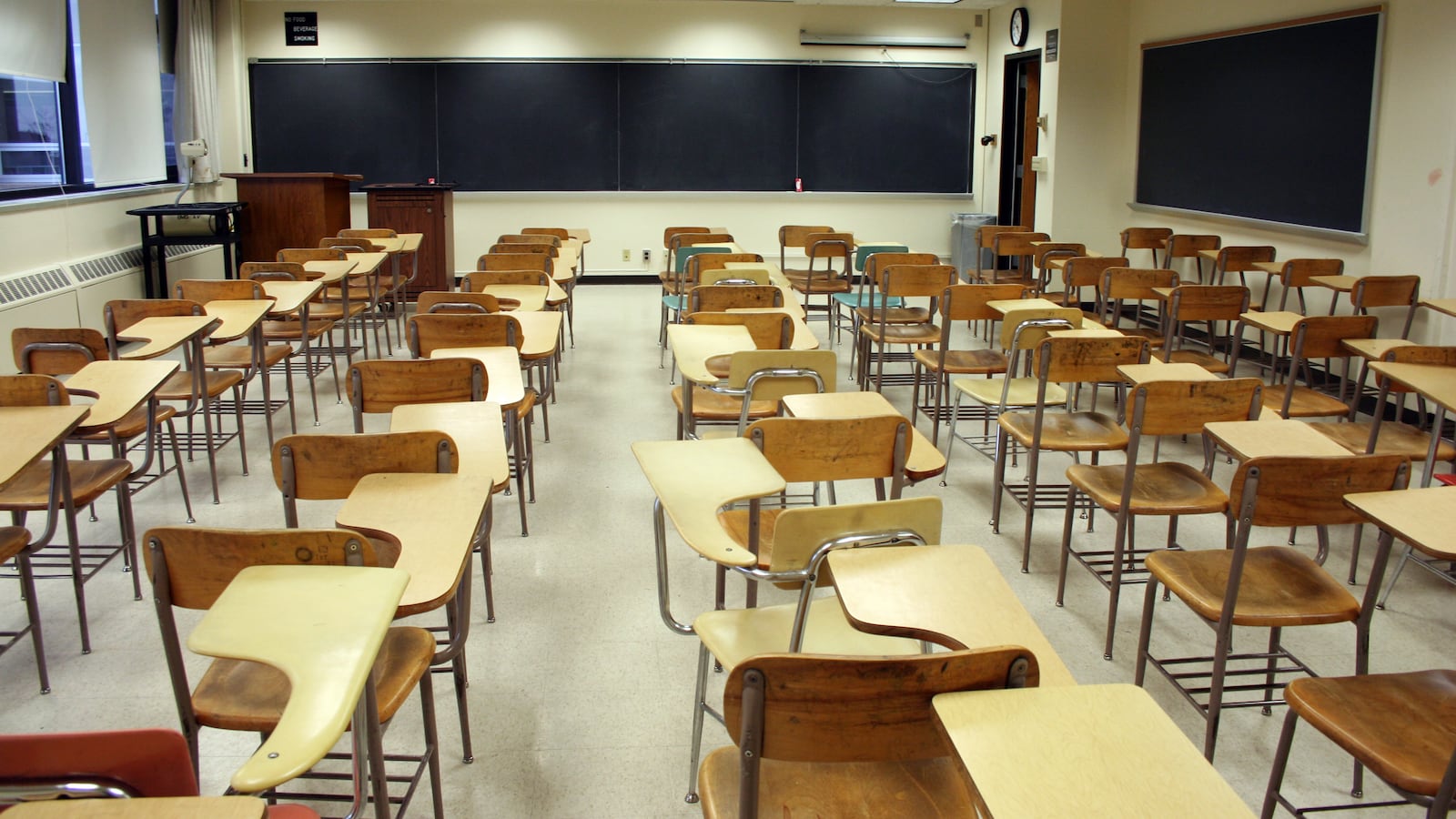As Shelby County Schools embarks on a process to cut costs by closing schools, two dozen Memphis schools already have three strikes against them.
Twenty-five schools have test scores so low that the state could require them to be overhauled; enroll fewer than 70 percent as many students as their buildings can hold; and operate in space that would cost more than $1 million on average to bring up to date, according to a Chalkbeat analysis of district data.
Those schools could be most vulnerable for closure in the near future as the district looks for ways to reduce costs and capacity in response to declining student enrollment. They include Raleigh Egypt High School, East High School, Bruce Elementary School and 12 iZone schools.
Stay updated on Tennessee education with Rise & Shine, our daily newsletter. Sign up here.
The district is preparing to release a study of its space footprint this fall as part of a “right-sizing” process that Superintendent Dorsey Hopson jumpstarted this spring. He has said the district needs to shed as many as two dozen schools — and 27,000 seats — over the next four years. Already this year, the district is closing two schools and one center serving adult students in an effort to trim costs.
The district considers enrollment, maintenance costs, and test score performance when deciding which schools to close. School board member Kevin Woods said there is no cut-and-dry threshold for low enrollment that makes a school eligible for closure, although previous closures since 2012 have included schools with utilization rates up to 71 percent.
District officials have declined to comment on schools’ utilization rates before releasing the footprint study this fall. (After this story was published, officials released a statement reiterating that they will release a plan that includes collaboration with the community. “Any other reference of potential school closures is speculation and not based on the result of the District’s efforts,” the statement said.)
The district-run schools the school board decided this year to shutter — Northside and Carver high schools — were each using less than a third of their space and together needed $8.6 million in repairs. After Northside closes in a year, both buildings will sit empty while the district decides whether to repurpose or demolish them.
Northside and Carver are the most under-enrolled schools in the district, with only 23 and 31 percent of seats filled, respectively.
Hamilton Middle School is the next least crowded, with 383 students using a building designed for nearly 1,200. (At the other end of the spectrum is Wells Station Elementary School, where 754 students are crammed into a building meant for half as many.)
Hamilton was one of the district’s first schools in its vaunted Innovation Zone initiative, in which some low-performing schools are getting extra money to boost student scores. That initiative could complicate the district’s decision-making in the coming years: Twelve of the schools with three strikes are in the iZone, meaning that a decision to close them would undercut the district’s own recent investments. The district is also planning to add new grades and programs to other schools meeting all three closure conditions, suggesting that the district might intend to keep them open.
Shelby County’s many underused and poorly maintained buildings have played a major role in this year’s budget negotiations. Members of the Shelby County Board of Commissioners, which supplies most of the funding for school facilities, have questioned why they should contribute more to the district when it could move more quickly to close underused schools.
“Without a budget deficit, you’re not closing schools,” Commissioner David Reaves told Hopson during a hearing about whether the commission should allocate more money to school operations. “I don’t believe without a burning reason to do it that your board gets the job done.”
Below, find the district-run schools that are using no more than 70 percent of their space. Schools that also are on the state’s “priority” list of low-performing schools or in danger of joining it and would require more than $1 million to bring up to date are in bold.
- Northside High School
- Carver High School
- Hamilton Middle School
- Vollentine Elementary School
- Westwood High School
- East High School
- Magnolia Elementary School
- Mt. Pisgah Middle School
- Hamilton High School
- Woodstock Middle School
- Carnes Elementary School
- Trezevant High School
- Dexter Middle School
- Getwell Elementary School
- A. B. Hill Elementary School
- Northaven Elementary School
- Manor Lake Elementary School
- Manassas High School
- Mitchell High School
- Melrose High School
- Cordova Middle School
- Lucy Elementary School
- Raleigh-Egypt High School
- Alcy Elementary School
- Geeter Middle School
- Bruce Elementary School
- Hawkins Mill Elementary School
- Treadwell Middle School
- Bethel Grove Elementary School
- Chickasaw Middle School
- Double Tree Elementary School
- Douglass High School
- Alton Elementary School
- Oakhaven High School
- Southwind High School
- LaRose Elementary School
You can see all 142 district-run school’s enrollment data and maintenance costs here. Pay special attention to the “facility condition index,” or FCI rate, which measures the maintenance and repair costs against the current replacement cost of the building. The higher the number, the less cost effective it is for the district to keep the building open.
Editor’s note: This story has been updated to include a statement issued Wednesday by Shelby County Schools.

